

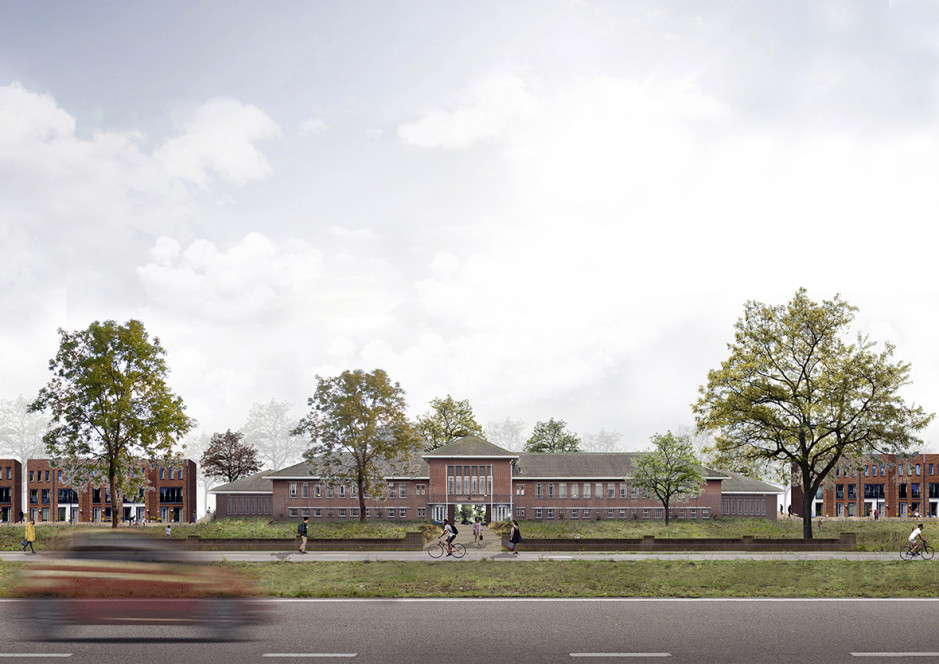
The Willem II Kazerne neighbourhood is part of the Stappegoor area development, located on the southern edge of Tilburg. Central to the development of the new Kazerne neighbourhood are the old barracks, designed in 1939 by A.G. Boost. For decades, this unique structure was hidden from the people of Tilburg, but it will soon be accessible to everyone via the gate in the main building. Karres en Brands was selected in 2019 to devise an urban design and image quality plan for this residential area. The new design is largely inspired by the barracks’ architecture and history.
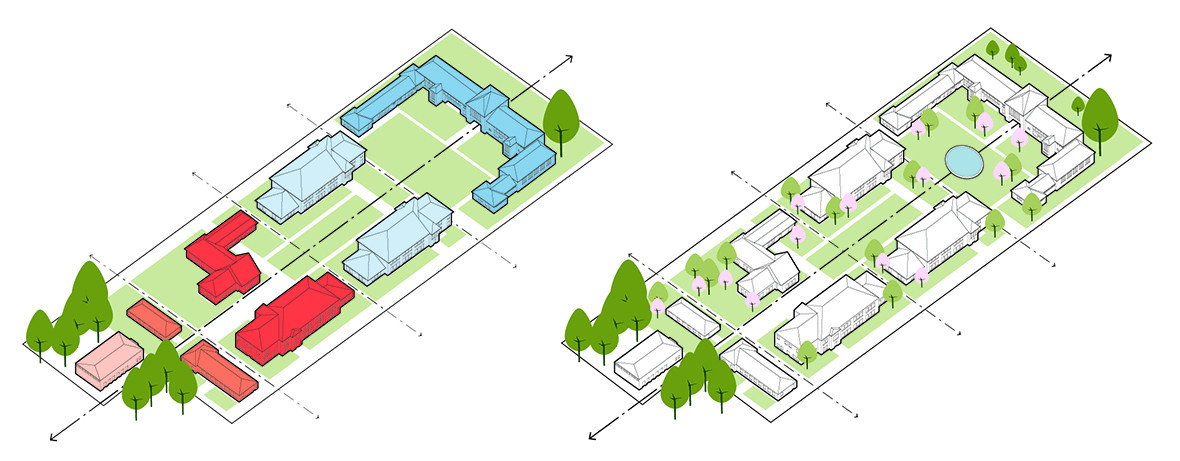
In the redevelopment of the barracks building and the public space, we believe that it is essential to preserve the traces of the past. Not only have the original design and detailing been valuable sources of inspiration, we’ve also been able to draw from the penitentiary layout. By repurposing the old barracks buildings, the surrounding area comes to life. The construction of the main building, encampment and kitchen building may soon house elderly care, social rental apartments, a school, a nursery and other neighbourhood functions.
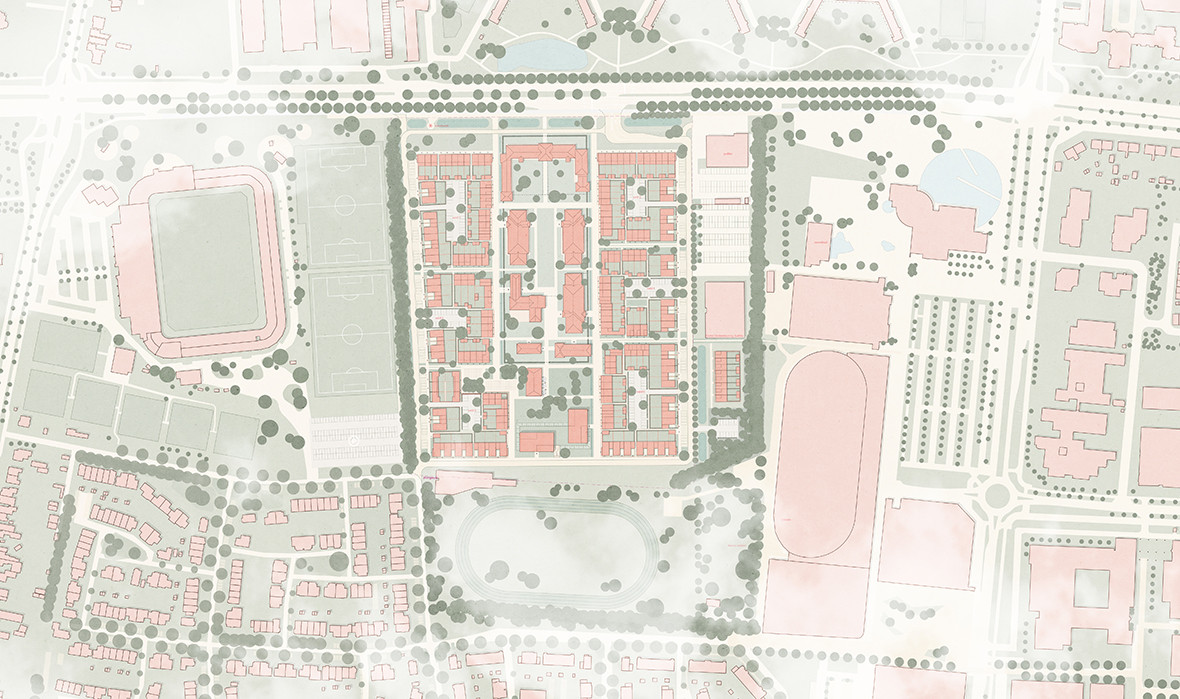
The two flanks next to the barracks building offer space for new construction. In terms of footprint, size and scale, these plots respond to the cultural and historical value of the existing buildings and are positioned in such a way that they allow visual connections to the barracks buildings. The district is characterized by its green layout and the rational orthogonal structure, a testament to its military past. Solid building blocks are formed with a clearly coherent architectural style. The barracks-style architecture is translated into the new design in a contemporary and sober way.
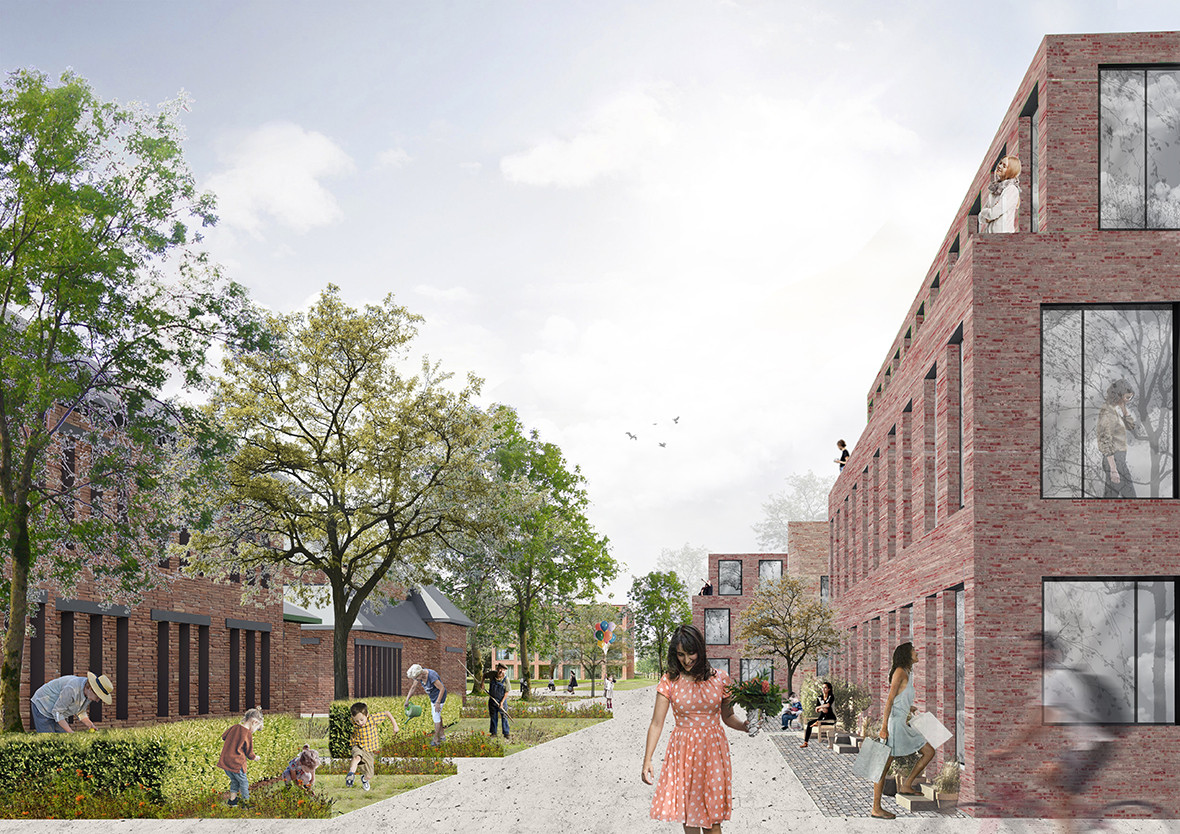
Through this design approach, the Kazerne neighbourhood becomes a location that offers a unique quality of life. It is optimally accessible from the city centre and other districts of Tilburg, especially by bicycle or public transport. Although the neighbourhood does facilitate car use, it also explicitly encourages the use of sustainable means of transport such as shared cars, public transport and bicycles. The interior of the neighbourhood is virtually car-free. Streets designed for slow traffic serve as a connecting main element between the various neighbourhood functions. These streets form a green, car-free residential area that connects the neighbourhood squares with the future Stappegoorpark.
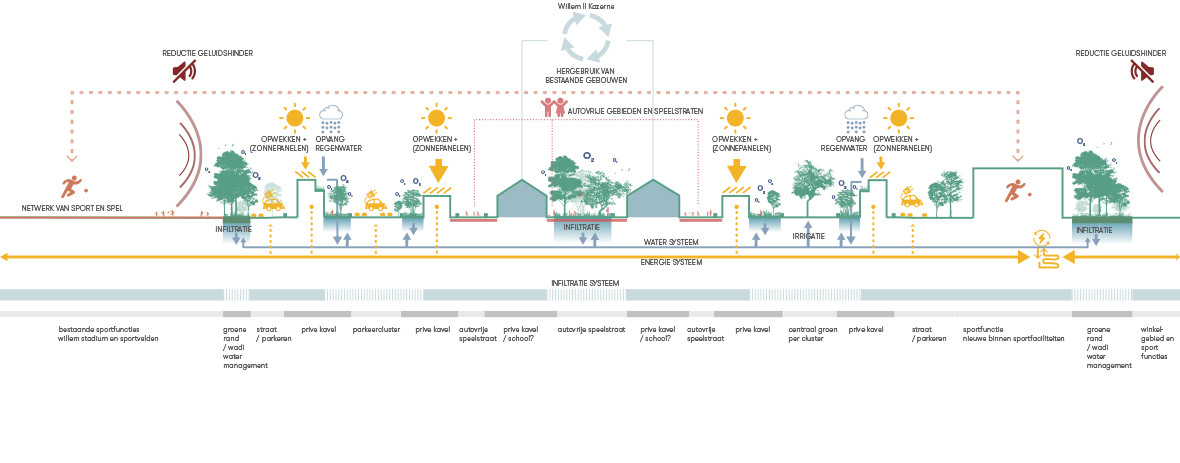
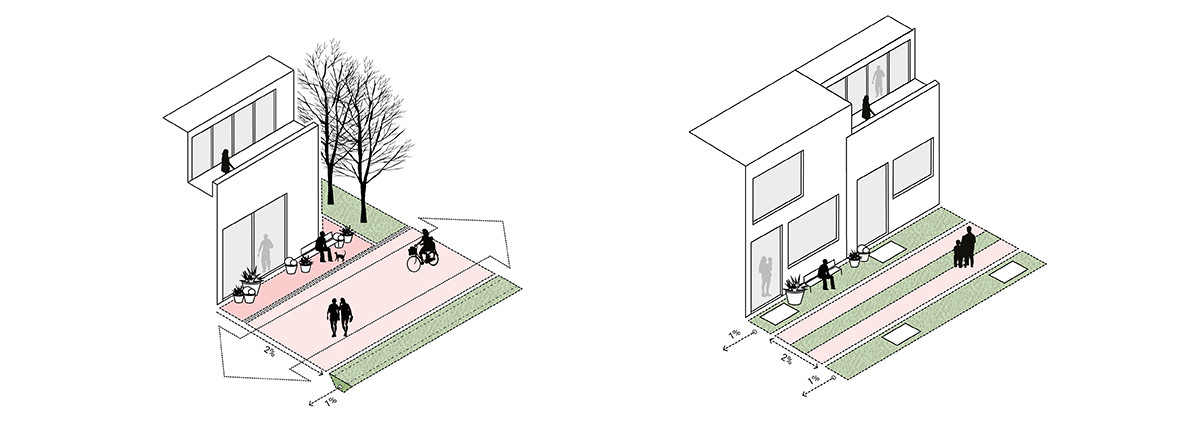
The car-free environment stimulates movement, meeting and interaction within the neighbourhood itself. As a result, the neighbourhood is not defined by its iconic architecture but by a carefully shaped interaction between building and public space. On the residential streets, the transition between the front door and the street is designed as a contemporary version of the “Delft sidewalk” with the possibility for facade gardens, benches and steps. By widening the residential street into mini-squares, interactions become part of a lively street. In addition, both the neighbourhood park, the neighbourhood square and the collective green areas in the barracks form a rich, small-scale public space structure for the entire Kazerne neighbourhood.
| Location. | Tilburg, The Netherlands |
|---|---|
| Assignment | Urban development plan, image quality plan and redevelopment of barracks |
| Size | 8.50 hectare |
| Design | 2019 - now |
| Status | In design |
| Client | Gemeente Tilburg, Synchroon and BPD-Zuid |